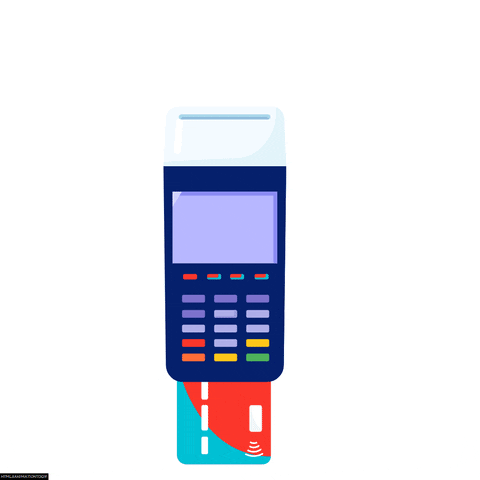End-of-Year Bookkeeping Checklist for Home Service Businesses
End-of-Year Bookkeeping Checklist for Home Service Businesses

The holidays are just around the corner, but instead of enjoying your well-earned rest, you may stare at business receipts, invoices, and spreadsheets from last January.
Let’s face it: numbers won’t organize themselves, and you need a system to manage your home service business efficiently.
We created an end-of-year bookkeeping checklist to help you start the new year strong. So, let’s get started.
What is End-of-Year Bookkeeping?
Did you know that 82% of small businesses fail due to cash flow problems? You may wonder why it happens. The simple explanation is that cash flow issues often stem from one thing: poor bookkeeping.
End-of-year bookkeeping is reviewing, organizing, and finalizing your financial records before midnight on December 31st.
It’s about reconciling accounts, categorizing expenses, and ensuring everything is prepared for tax season.
But it’s not just about this. For home service businesses, where income often ebbs and flows with seasons, proper year-end bookkeeping can reveal a lot: What’s driving profits? Where are the leaks in spending? Are there clients who still owe you money? These insights aren’t just helpful—they’re critical for planning and growing in the new year.
Pro Tip: Block off a day or two before the year-end rush to focus on your financials.

End-of-Year Bookkeeping Checklist
Unfortunately, bookkeeping doesn’t come with a handy toolbelt; it can feel like chasing a squirrel around the yard. But here’s the thing—bookkeeping is just another task on your to-do list, and with the right checklist, it’s manageable. Here’s the end-of-year bookkeeping checklist:
1. Bank and Credit Card Reconciliation
You need to make sure everything matches up—the income and expenses need to align with your bank statements. If not, there’s a problem, and now’s the time to fix it.
Reconciling your accounts ensures that every transaction—big or small—is accurately recorded. It helps you catch mistakes, like double charges or forgotten deposits and ensures your books are ready for tax season.
2. Review Accounts Payable and Receivable
Reviewing your accounts payable (what you owe) and accounts receivable (what’s owed to you) is your chance to get a clear snapshot of your financial obligations.
You need to list any outstanding bills or expenses for accounts payable. Are there payments you can settle now? Are there clients who still haven’t paid up?

3. Create a Profit and Loss Statement
Profit and Loss Statement is the “report card” for your business. The P&L statement breaks down your revenue, expenses, and net income, giving you a clear picture of your business’s financial health.
Here’s the good news: creating one isn’t rocket science, especially if you use accounting software like QuickBooks Online. You can generate a P&L statement with just a few clicks.
If you’re doing it manually, include all income and expenses from your reconciled accounts.
4. Do an Inventory Inspection
A year-end inventory inspection ensures you’re stocked and ready for whatever jobs the new year throws your way.
Take a thorough count of your supplies, tools, and materials. Identify what’s low, what’s overstocked, and what’s just gathering dust in the back of the van.
For home service businesses, this step isn’t just about tracking physical items—it’s about financial accuracy. Your inventory affects your expenses, the cost of goods sold, and your profits.
5. Collect Outstanding Invoices
Chasing down overdue payments isn’t how you’d like to spend your December. But you can’t let unpaid invoices linger, as it can affect your business’s cash flow.
Look closely at your accounts receivable and identify clients who still owe you money. Send polite but firm reminders and consider offering convenient payment options to make it easier for them to settle their balances. Tools like QuickBooks or Jobber make sending reminders a breeze.

6. Do Tax Documentation
Taxes—love them or hate them, they’re unavoidable. Getting your tax documentation in order before the year-end isn’t just a good idea; it’s essential.
Start by gathering all necessary documents: income records, expense receipts, payroll summaries, and tax-deductible purchases if you’ve been diligent about tracking these throughout the year, kudos! If not, now’s the time to go through your records, bank statements, and credit card transactions to fill in the gaps.
Don’t forget to review your deductions. Did you purchase new equipment, attend industry-specific training, or use the home office? These can all work in your favour when it’s time to file.
7. Double Check Payroll
As you wrap up the year, double-check your payroll records to ensure that all tax withholdings are accurate and that every employee and contractor has been paid correctly.
Review your payroll reports to confirm working hours, overtime, and bonuses are correctly recorded. You also need to make sure payroll taxes have been withheld and submitted properly.
Don’t forget to prepare for year-end payroll forms, like W-2s or 1099s, which must be sent to employees, contractors, and the IRS.

8. Check Forms to File
When it comes to year-end bookkeeping, the paperwork doesn’t stop at payroll. Your home service business may need to file a stack of forms to stay compliant and avoid penalties. This step ensures you’re not missing any crucial documentation.
Common ones include:
- W-2 Forms
- 1099 Forms
- State and local tax forms
- Sales tax filings
Double-check deadlines, as some forms are due as early as January. You can consult with a pro if you’re unsure which forms you need to file.
9. Do Budget Planning
Budget planning might not seem exciting, but it’s one of the most impactful ways to set your business for success.
Review your profit and loss statement (remember that from earlier?) to understand where your money went this year. Look for patterns—what months were your busiest? Which expenses ballooned unexpectedly? Use this information to forecast your income and expenses for the next year.
You can also set goals for growth, like adding a new service, investing in better tools, or hiring extra help.

10. Clean-up Business Receipts
When it comes to year-end bookkeeping, cleaning up your business receipts isn’t just a chore—it’s a must.
Start by gathering all your receipts, both physical and digital. Match them to the expenses you record in your accounting system to ensure nothing is missing or miscategorized. Be thorough, especially with big-ticket items that might qualify for tax deductions, like tools, fuel, or advertising.
Digital receipts are easier to store and organize. You can check out our guide on how to organize receipts properly.
Fun Fact: The IRS accepts digital copies of receipts.
Final Thoughts
Bookkeeping doesn’t have to feel like climbing Mount Everest. With this end-of-year bookkeeping checklist, you can manage your overall finances better.
Remember, bookkeeping isn’t just about the numbers. It’s about understanding your business and identifying opportunities. And if you ever feel overwhelmed, you can hire a pro to lighten your burden.
Tangent Consulting has years of experience working with home service businesses in bookkeeping, CFO services, tax preparation, and business consulting.
PS If you are reading this, it means you can have access to our free consultation for your home service business. Avail this for free today before we change our mind.
FAQs
How often should bookkeeping be done?
You should do bookkeeping weekly to stay on top of your finances. You can set a specific time each week for bookkeeping.
What is the biggest difficulty with bookkeeping?
The biggest difficulty with bookkeeping is staying organized and consistent, as tracking expenses, reconciling accounts, and managing receipts can be a hassle.
Who needs bookkeeping services?
Any business, big or small, benefits from bookkeeping services. It’s especially crucial for home service businesses with fluctuating cash flow.
